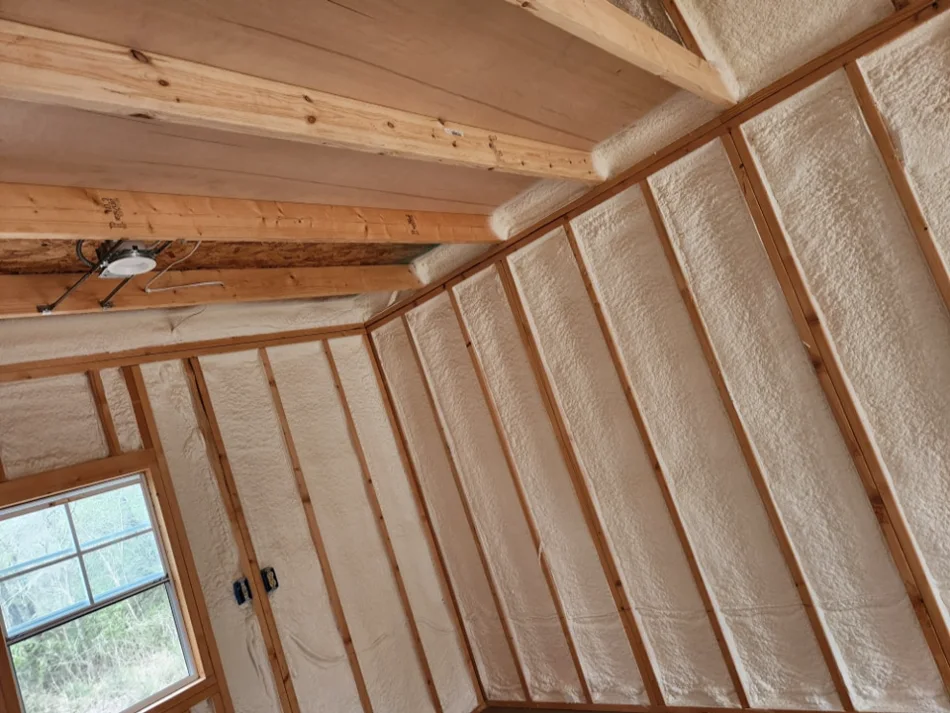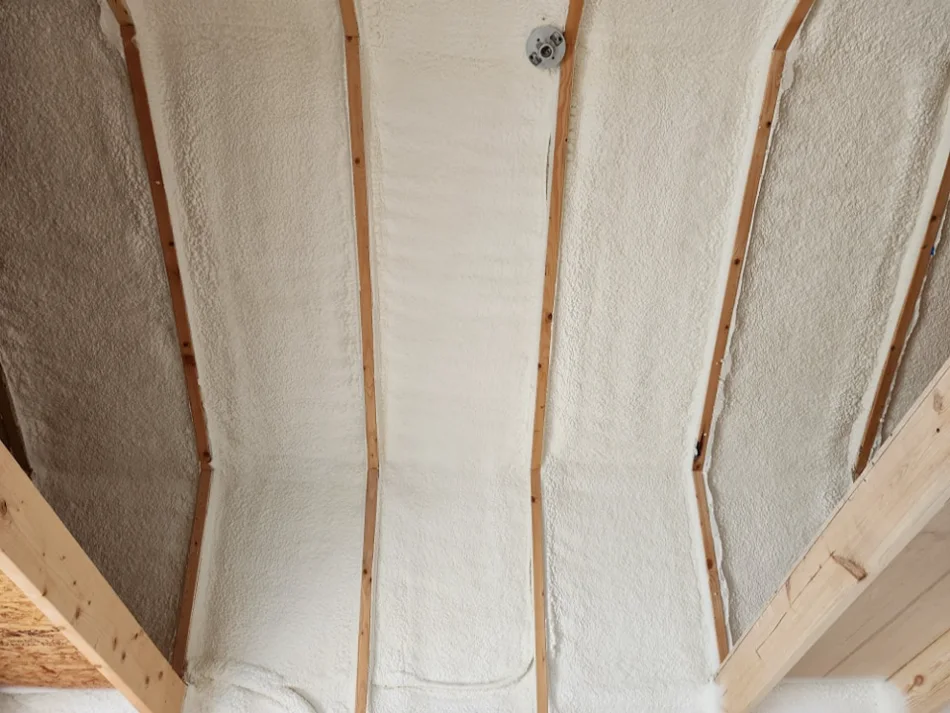
Spray foam insulation significantly reduces airborne sound transmission. In McLennan County, where proximity to roadways, agricultural machinery, and mixed-use zoning creates elevated noise levels, spray foam provides an effective solution for maintaining acoustic comfort indoors.
Spray foam forms a dense, continuous barrier that fills wall cavities, sealing cracks and gaps where sound can travel. Unlike traditional insulation that can slump or leave voids, spray foam maintains its shape and coverage, making it a reliable option for long-term sound dampening.
D&D Insulation LLC has extensive experience applying spray foam insulation in diverse environments across Central Texas. Results consistently show measurable improvement in indoor noise reduction, especially in pole barns, metal buildings, and wood-framed homes.
Spray foam limits sound transmission by combining air sealing with sound absorption. Open-cell spray foam is particularly effective due to its flexible, sponge-like texture that absorbs mid- and high-frequency sound waves.
| Insulation Type | STC Rating (Standard Wall Assembly) | Air Sealing Capability | Flexibility in Application | Moisture Resistance |
|---|---|---|---|---|
| Open Cell Spray Foam | 37-40 | Excellent | High | Moderate |
| Closed Cell Spray Foam | 33-36 | Excellent | Moderate | High |
| Fiberglass Batt | 33 | Poor | Moderate | Low |
| Fiberglass Loose Fill | 34 | Poor | Low | Low |
Bonus Tip: Open cell foam is preferred for interior wall sound control. Closed cell foam is better for moisture-prone areas but is less effective at absorbing noise.
| Property | Open Cell Spray Foam | Closed Cell Spray Foam |
|---|---|---|
| Density | 0.5 lbs/ft³ | 2.0 lbs/ft³ |
| Sound Transmission Class (STC) | 37-40 | 33-36 |
| Expansion Rate | 100:1 | 30:1 |
| R-Value per Inch | ~3.5 | ~6.0 |
| Vapor Permeability | High | Low |
| Installation Time (avg per room) | 1-2 hours | 2-3 hours |
McLennan County experiences a mix of hot summers and cool winters. HVAC systems often run year-round, and nearby highway or agricultural noise travels easily through thin walls.
Spray foam helps reduce HVAC strain by sealing thermal leaks and creating acoustic separation between indoor and outdoor zones. Open cell spray foam performs well in interior walls and ceilings, while closed cell is suited for roofs and exterior-facing surfaces in areas subject to humidity or wind-driven rain.
According to the U.S. Department of Energy (DOE), homes with continuous air sealing and insulation achieve up to 20% HVAC efficiency gains (source).
Bonus Tip: For rural properties near livestock or equipment sheds, interior open cell foam can cut noise intrusion by over 50% when used on shared structure walls.

D&D Insulation LLC provides these core services that contribute directly to indoor sound reduction:
Properly installed open cell spray foam can reduce sound transmission by 40-60%, depending on structure and wall assembly.
Yes. Spray foam reduces air leakage, which may change ventilation requirements. A professional assessment is advised.
In most cases, yes. Spray foam seals air gaps and absorbs more sound across a wider frequency range.
One to two days for a full residential application, depending on square footage and wall accessibility.
For sound control solutions backed by experience in McLennan County conditions, contact D&D Insulation LLC.
Phone: (903) 389-5705
Email: [email protected]
Speak with an insulation specialist to assess your wall structure, sound control goals, and climate exposure before choosing a product.
Yes. Open cell foam between floors reduces voice and footstep transfer by dampening vibration and sound travel.
Yes, once cured. Installers must follow proper ventilation and curing procedures.
Spray foam maintains shape and acoustic performance for decades if not physically disturbed.
Not necessarily. Spray foam often meets sound control needs without additional materials.
Yes. Hybrid approaches are common, such as combining open cell foam with fiberglass batts for cost balance.